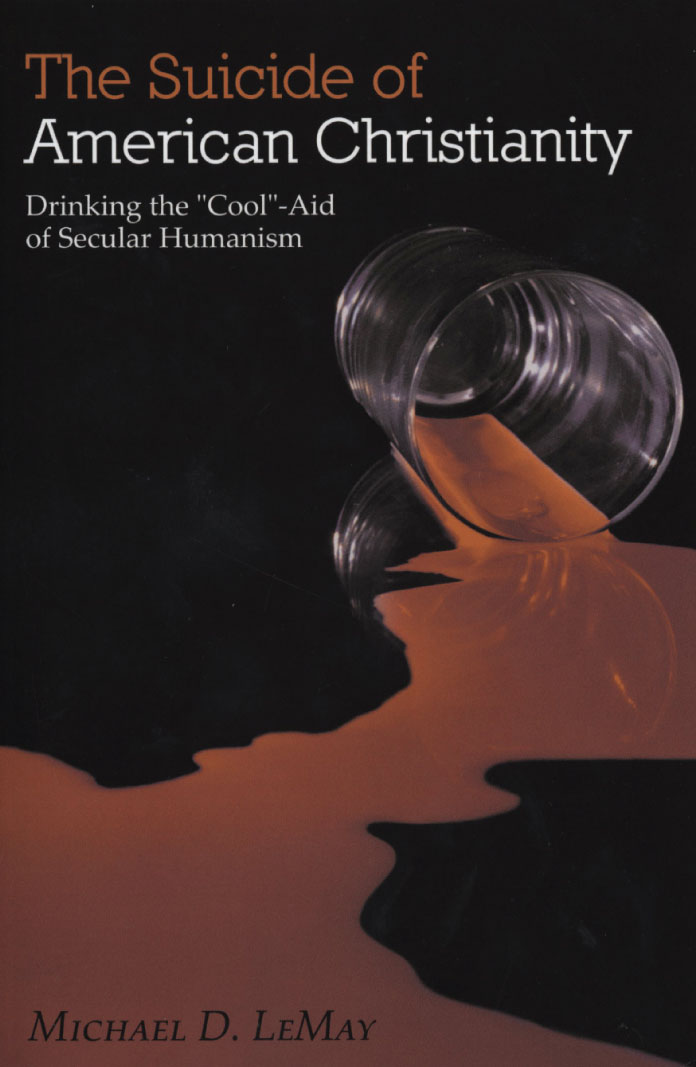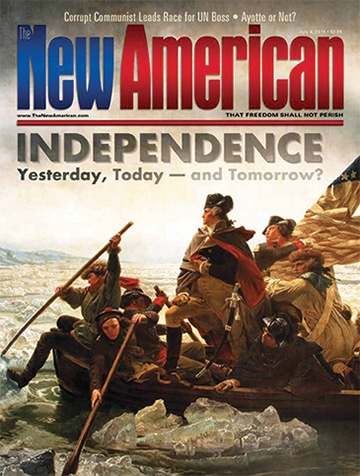Managing History: A Review of “To the Victor Go the Myths and Monuments”
To the Victor Go the Myths & Monuments: The History of the First 100 Years of the War Against God and the Constitution, 1776-1876, and Its Modern Impact, by Arthur R. Thompson, Appleton, Wisconsin: American Opinion Foundation Publishing, 2016, 492 pages, hardcover.
To the Victor Go the Myths & Monuments is a historical overview of the first 100 years of our country’s existence, as well as being much, much more. The author explains that those who study history soon discover that history books do not always contain the entire story, which often happens because of space constraints or because an author is unaware of certain facts. History can also be restricted to selected portions of the true story because of an author’s bias, his agenda, or because he is serving the agenda of others. A history in which facts are deliberately ignored or in which the author creates “facts” distorts the true picture of past events. Such distortions, built up over time, can have deadly effects on a people and on nations. As George Orwell (whom the author quotes on the title page) put it many years ago, “The most effective way to destroy a people is to deny and obliterate their own understanding of their history.”

If, in addition to distortions of the historical record, one adds another factor — the intentional “dumbing down” of a people — then the disintegration of a country can be accomplished even more quickly. I refer here to the modern phenomenon of large numbers of high-school or even college graduates who are unable to find the Pacific Ocean on an unlabeled map of the world, or to arrange major events or historical personages in chronological order (i.e., that Washington lived before the Civil War and that John F. Kennedy was president a century after that conflict). Even the ability to use and understand the English language has fallen on hard times. The vocabulary of the average young person has dwindled alarmingly; a diminishing vocabulary means a diminishing ability to understand the lessons of history or to grasp today’s crucial issues. Thus, one can see why control of education has long been a major objective to those desiring revolutionary changes in America.
Another component that assists in distorting the past in order to shape the future is the control of the publication and distribution of books, especially history books. Of course, there are independent publishers, but their books do not usually receive the promotion and publicity given to establishment publishers, such as favorable reviews in major newspapers and magazines. As the author points out, books such as None Dare Call It Treason and None Dare Call It Conspiracy sold six to 12 million copies each in the 1960s and ’70s, yet despite the fact that they were bestsellers, neither received serious notice in the mass media.
To the Victor Go the Myths & Monuments, by John Birch Society (the parent organizaion of The New American) CEO Arthur R. Thompson, is both very broad and very detailed in its scope. Since space does not allow an examination here of all of the periods covered, I will concentrate on two important ones: the decades after American independence and the period leading to the Civil War.
In the decades following independence, conspirators and radicals wished to propel our country in the direction followed by the revolutionary regime in France, with its bloody extermination of opponents and potential opponents, and its highly centralized government. The author writes: “The American War for Independence produced a country that in many respects was the opposite of what would be produced by the French Revolution. It became a struggle between two opposing forces, good and evil, manifested in their governments, and as a result a struggle over the New World geography and people that the New and the Old World governments would govern.” Our American Revolution did not aim at the destruction of the social system of Colonial America. It aimed simply at guaranteeing that Americans (who at that time were overwhelmingly English) would enjoy all of the rights of other Englishmen. Because of the intransigence of the British government at that time, that guarantee could only come about through independence. The French Revolution, by way of contrast, aimed at the systematic dismantling of traditional France, the destruction of its social system, and the extirpation of religion.
Those who have studied that period in depth know that the French Revolution was the product of the machinations of a group known as the Illuminati, the members of which opposed Christianity and Christian government, which they sought to replace with a godless despotism. People of the same mentality, mostly agents of the French revolutionary government, worked to accomplish similar objectives in America, using inflammatory rhetoric to try to incite rebellion and chaos. They were particularly hostile toward President Washington and the new Constitution since the president was conservative in outlook, opposing any radicalism, and the Constitution was an instrument of governance that upheld both liberty, on the one hand, and a stable conservatism, on the other. Placing limits on government power, the Constitution was especially detested by the radicals. Through secret societies controlled by or heavily influenced by French agents, it was hoped that a mass insurrection could be fomented. As in revolutionary France, an explosion of mob violence could bring radicals to power. As the book notes, that nearly happened during the administration of John Adams.
In short, the activities of revolutionary France and its supporters in the newly independent America were much the same as the activities of the USSR and its supporters in America in the 20th century — to subvert and overthrow the legitimate government of the United States and to replace it with a revolutionary dictatorship. The conspirators failed then, but they did not give up.
During the first half of the 19th century, the issue seized upon by the enemies of our Constitutional Republic was slavery. Their strategy was as old as warfare itself: “divide and conquer.” The author writes, “The English abolished slavery peacefully in 1833 and provided £20 million plus an apprenticeship for ex-slaves — a great deal cheaper than waging war. And they did not have to kill two-thirds of a million men-at-arms and untold numbers of civilians to accomplish the end of slavery, as the Conspiracy did in America.”
Extremists in the North, who were often socialists in outlook and therefore not only opposed private ownership of slaves but private ownership of property as well, made incendiary speeches and published diatribes against the South and its people. In 1859, the infamous John Brown launched a raid on a military armory in Harpers Ferry, Virginia (now in West Virginia), hoping to arm slaves after inciting a mass slave insurrection. Brown was captured, convicted of treason against the State of Virginia, and hanged. That, however, served to inflame passions further. For Northern abolitionists, Brown was a martyr whose death won many new adherents to their cause. In the South, thoughts of a slave insurrection sent shivers of horror through the entire populace and created boundless resentment, even hatred, of the North. To rabid abolitionists all Southerners were evil and the whole of their society was deserving of obliteration. To Southerners, it seemed like the whole of the North not only was against them, but sought their annihilation.
Only a small percentage of the Southern population were slave owners, so it was not the defense of slavery that motivated Southerners — it was that they were fiercely independent and therefore resented being pushed around by outsiders. So it was that firebrands on both sides, often with connections to Conspiracy-directed organizations or unknowingly manipulated by such organizations, fanned the flames of war. Many abolitionists argued for the disunion of the South from the other states before the war, yet once the war was under way, they became fanatical unionists, screaming for blood. With the election of Abraham Lincoln in 1860, the fuse was ignited, and at the end of the bloodiest war in our history, the Conspiracy achieved its goals: The South was devastated, its social system largely overturned; state sovereignty was greatly weakened; and the process toward ever-greater centralization under the federal government was set in motion.
Arthur R. Thompson’s book is superb, indeed a “must read.” Some of the particulars about certain important figures and events in America’s history will astonish readers. Very often, while reviewing events during the country’s first 100 years, he brings out analogous events from our own time, so better to illustrate the similarities of the dangers experienced then and now. Moving back and forth from the past to the present and then back again shows that threats to the liberty and independence of our land are nothing new. Almost from the beginning, America represented a magnificent prize much coveted by the representatives of evil. And just as they will not relent, so too must patriotic Americans be relentless in repelling their intrigues and deception.
Most importantly, the author affirms that the situation is far from hopeless. Through persistence, organization, and coordinated effort, we can be victorious, thereby assuring the blessings of liberty for ourselves and for our progeny.


